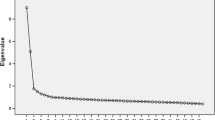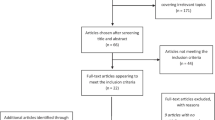Abstract
Background
Neurological and psychiatric patients want to keep driving but several sensory, motor, and cognitive deficits could limit this purpose. However, some drivers “self-regulate” driving behavior to minimize the risk of accidents. A good predictor of this behavior seems to be the self-perceived driving ability. The purpose of this study was to evaluate whether the neuropsychological profile of neurological and psychiatric active drivers correlates to self-reported and caregiver-referred driving behavior.
Methods
Sixty-three active drivers diagnosed with a neurological or psychiatric condition were enrolled and underwent cognitive assessment plus two behavioral questionnaires (Driver Behavior Questionnaire — DBQ and Barratt Impulsiveness Scale-version 11). DBQ and IADL (Instrumental Activities of Daily Living) were also administered to thirty-nine caregivers, to assess autonomy in daily life and the frequency of errors and violations committed by drivers. Spearman’s Rho non-parametric analysis was used to investigate the relationship between performances at neuropsychological tests and DBQ responses. Cohen’s weighted kappa coefficient was also adopted to verify the strength of agreement between the two groups at the DBQ.
Results
Results suggested an overall agreement between self-reported and caregiver-referred driving behavior; moreover, a relationship between self-referred driving behavior and impulsiveness was found. However, neuropsychological performances were not related to self-perceived driving ability.
Conclusions
These results provide new insight regarding the risk of incurring road accidents and can be useful to promote a more appropriate evaluation of risk accidents in neurological and psychiatric patients.
Similar content being viewed by others
References
De las Cuevas C, Sanz EJ (2008) Fitness to drive of psychiatric patients. Prim Care Companion J Clin Psychiatry 10(5):384–390
Handler BS, Patterson JB (1995) Driving after brain injury. J Rehabil 61(2):43
Adrian J, Moessinger M, Charles A, Postal V (2019) Exploring the contribution of executive functions to on-road driving performance during aging: a latent variable analysis. Accid Anal Prev 127:96–109
Apolinario D, Magaldi RM, Busse AL, Lopes LDC, Kasai JYT, Satomi E (2009) Cognitive impairment and driving: a review of the literature. Dement Neuropsychol 3(4):283–290
Ledger S, Bennett JM, Chekaluk E, Batchelor J (2019) Cognitive function and driving: important for young and old alike. Transport Res F: Traffic Psychol Behav 60:262–273
Choi M, Adams KB, Mezuk B (2012) Examining the aging process through the stress-coping framework: application to driving cessation in later life. Aging Ment Health 16(1):75–83
Feng YR, Meuleners L (2020) Planning for driving cessation in older drivers. Transport Res F: Traffic Psychol Behav 72:62–70
Kowalski K, Love J, Tuokko H, MacDonald S, Hultsch D, Strauss E (2012) The influence of cognitive impairment with no dementia on driving restriction and cessation in older adults. Accid Anal Prev 49:308–315
Unsworth CA, Baker AM, So MH, Harries P, O’Neill D (2017) A systematic review of evidence for fitness-to-drive among people with the mental health conditions of schizophrenia, stress/anxiety disorder, depression, personality disorder and obsessive compulsive disorder. BMC Psychiatry 17(1):1–18
Folstein MF, Folstein FE, McHugh PR (1975) Mini mental state: a practical method for grading the cognitive state of patients for clinician. J Psychiatr Res 12:189–198
Magni E, Binetti G, Bianchetti A, Rozzini R, Trabucchi M (1996) Mini-mental state examination: a normative study in Italian elderly population. Eur J Neurol 3(3):198–202
Spinnler H, Tognoni G (1987) Italian standardization and classification of neuropsychological tests. The Italian group on the neuropsychological study of aging. Ital J Neurol Sci Suppl 8:1–120
Giovagnoli AR, Del Pesce M, Mascheroni S, Simoncelli M, Laiacona M, Capitani E (1996) Trail making test: normative values from 287 normal adult controls. Ital J Neurol Sci 17(4):305–309
Caffarra P, Vezzadini G, Dieci F, Zonato F, Venneri A (2002) Una versione abbreviata del test di Stroop: dati normativi nella popolazione italiana. Nuova Rivista di Neurologia 12(4):111–115
Carlesimo GA, Caltagirone C, Gainotti GUID, Fadda L, Gallassi R, Lorusso S, Marfia G, Marra C, Nocentini U, Parnetti L (1996) The mental deterioration battery: normative data, diagnostic reliability and qualitative analyses of cognitive impairment. Eur Neurol 36(6):378–384
Fossati A, Di Ceglie A, Acquarini E, Barratt ES (2001) Psychometric properties of an Italian version of the Barratt impulsiveness Scale-11 (BIS-11) in nonclinical subjects. J Clin Psychol 57(6):815–828
Reason J, Manstead A, Stradling S, Baxter J, Campbell K (1990) Errors and violations on the roads: a real distinction? Ergonomics 33(10–11):1315–1332
Harrison W (2009) Reliability of the driver behaviour questionnaire in a sample of novice drivers. In Proceedings of the Australasian road safety research, policing and education conference, Sydney, New South Wales
Cicognani E, Zani B (2002) Determinanti psicosociali dei comportamenti stradali a rischio [Psychosocial predictors of “at risk” driving behaviors]. Psicol Salute 3:5–17
Lucidi F, Giannini AM, Sgalla R, Mallia L, Devoto A, Reichmann S (2010) Young novice driver subtypes: relationship to driving violations, errors and lapses. Accid Anal Prev 42:1689–1696. https://doi.org/10.1016/j.aap.2010.04.008
Mallia L, Lucidi F, Giannini AM (2007) Caratteristiche psicometriche del Driver Behavior Questionnaire [Psychometric characteristics of the Driver Behavior Questionnaire]. Proceedings of the annual meeting of the Italian Psychological Association (AIP) – Experimental Psychology Section, Como, Italy
Smorti M, Guarnieri S (2016) Exploring the factor structure and psychometric properties of the Manchester driver behavior questionnaire (DBQ) in an italian sample. TPM Test Psychom Methodol Appl Psychol 23:185–202. https://doi.org/10.4473/TPM23.2.4
Aberg L, Rimmo PA (1998) Dimensions of aberrant driver behaviour. Ergonomics 41(1):39–56
Af Wåhlberg AE, Barraclough P, Freeman J (2015) The driver behaviour questionnaire as accident predictor; a methodological re-meta-analysis. J Saf Res 55:185–212
De Winter JCF, Dodou D (2010) The driver behaviour questionnaire as a predictor of accidents: a meta-analysis. J Saf Res 41(6):463–470
De Winter JC, Dodou D, Stanton NA (2015) A quarter of a century of the DBQ: some supplementary notes on its validity with regard to accidents. Ergonomics 58(10):1745–1769
Spano G, Caffò AO, Lopez A, Mallia L, Gormley M, Innamorati M, Lucidi F, Bosco A (2019) Validating driver behavior and attitude measure for older Italian drivers and investigating their link to rare collision events. Front Psychol 10:368
Lawton MP, Brody EM (1969) Assessment of older people: self-maintaining and instrumental activities of daily living. Gerontologist 9(3_Part_1):179–186
IBM Corp (2020) IBM SPSS statistics for windows, version 26.0. IBM Corp, Armonk, NY
Molnar FJ, Patel A, Marshall SC, Man-Son-Hing M, Wilson KG (2006) Clinical utility of office-based cognitive predictors of fitness to drive in persons with dementia: a systematic review. J Am Geriatr Soc 54(12):1809–1824
Rapoport MJ, Naglie G, Weegar K, Myers A, Cameron D, Crizzle A, Korner-Bitenskyi N, Tuokkok H, Vrkljanh B, Bédardl M, Porterm MM, Mazeri B, Gélinasi I, Man-Son-Hinge M, Marshall S (2013) The relationship between cognitive performance, perceptions of driving comfort and abilities, and self-reported driving restrictions among healthy older drivers. Accid Anal Prev 61:288–295
Reger MA, Welsh RK, Watson G, Cholerton B, Baker LD, Craft S (2004) The relationship between neuropsychological functioning and driving ability in dementia: a meta-analysis. Neuropsychology 18(1):85–93
Scialfa C, Ference J, Boone J, Tay R, Hudson C (2010) Predicting older adults’ driving difficulties using the Roadwise review. J Gerontol B Psychol Sci Soc Sci 65(4):434–437
Molnar FJ, Simpson CS (2010) Approach to assessing fitness to drive in patients with cardiac and cognitive conditions. Can Fam Physician 56(11):1123–1129
Freund B, Colgrove LA, Burke BL, McLeod R (2005) Self-rated driving performance among elderly drivers referred for driving evaluation. Accid Anal Prev 37(4):613–618
Owsley C, McGwin G Jr, McNeal SF (2003) Impact of impulsiveness, venturesomeness, and empathy on driving by older adults. J Saf Res 34(4):353–359
Schwebel DC, Ball KK, Severson J, Barton BK, Rizzo M, Viamonte SM (2007) Individual difference factors in risky driving among older adults. J Saf Res 38(5):501–509
Lajunen T, Summala H (2003) Can we trust self-reports of driving? Effects of impression management on driver behaviour questionnaire responses. Transport Res F: Traffic Psychol Behav 6(2):97–107
Sullman MJ, Taylor JE (2010) Social desirability and self-reported driving behaviours: should we be worried? Transport Res F: Traffic Psychol Behav 13(3):215–221
Author information
Authors and Affiliations
Corresponding author
Ethics declarations
Ethical approval
The study was approved by the local ethics committee of S. Orsola–Malpighi University Hospital and the requirement for informed consent was waived by the Ethics Commission.
Competing interests
The authors declare no competing interests.
Additional information
Publisher’s note
Springer Nature remains neutral with regard to jurisdictional claims in published maps and institutional affiliations.
Rights and permissions
About this article
Cite this article
Difonzo, T., Martini, M., Zago, S. et al. Relationship between self-perceived driving ability and neuropsychological performance in neurological and psychiatric patients. Neurol Sci 43, 3595–3601 (2022). https://doi.org/10.1007/s10072-021-05858-z
Received:
Accepted:
Published:
Issue Date:
DOI: https://doi.org/10.1007/s10072-021-05858-z




